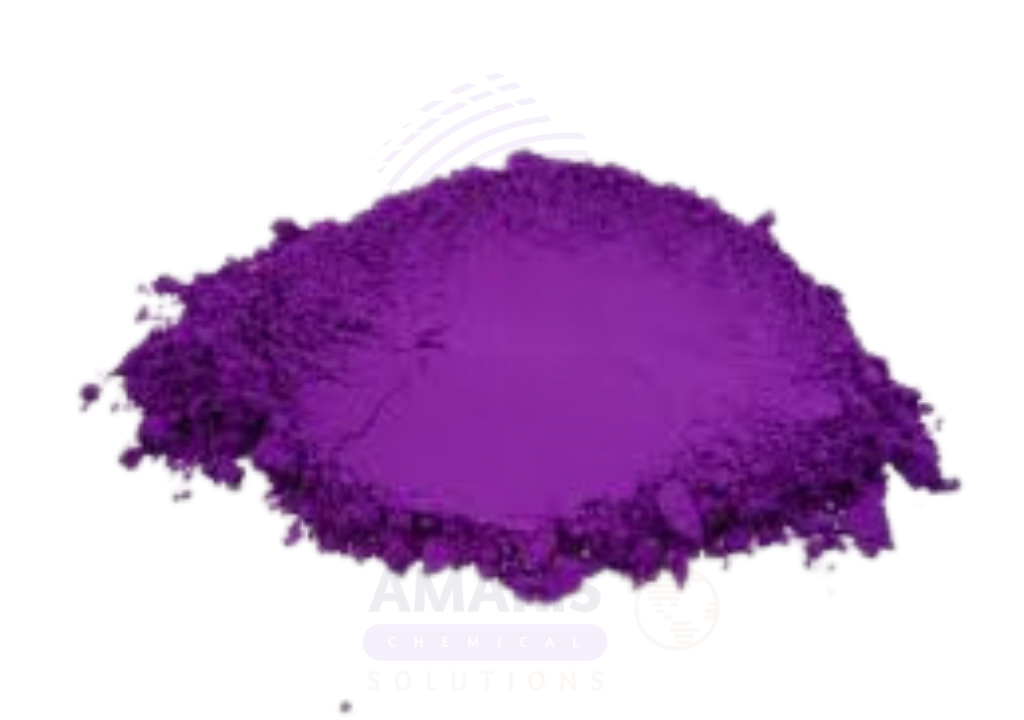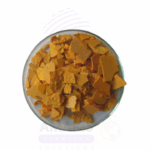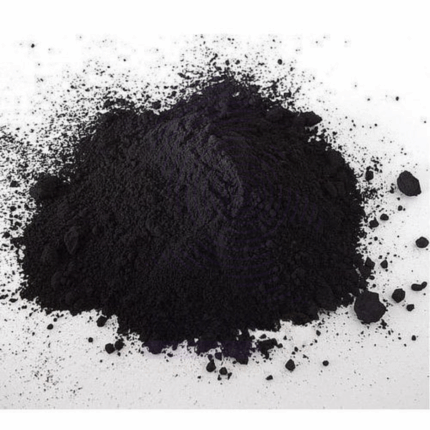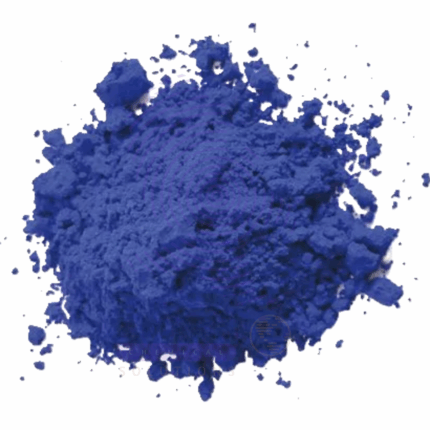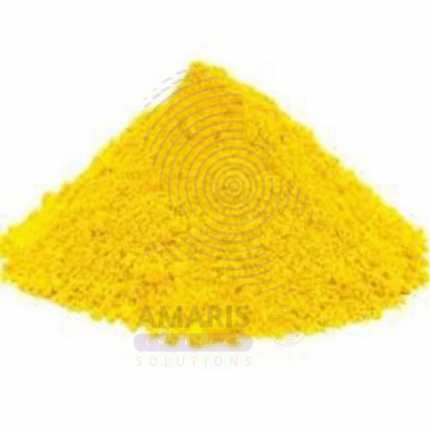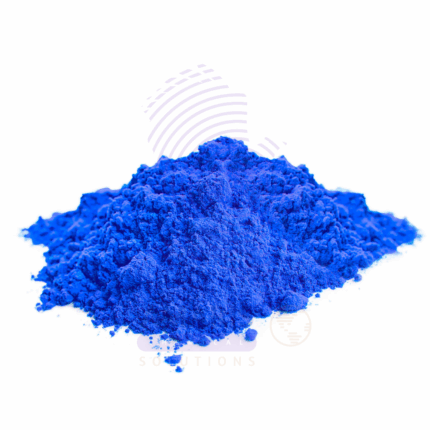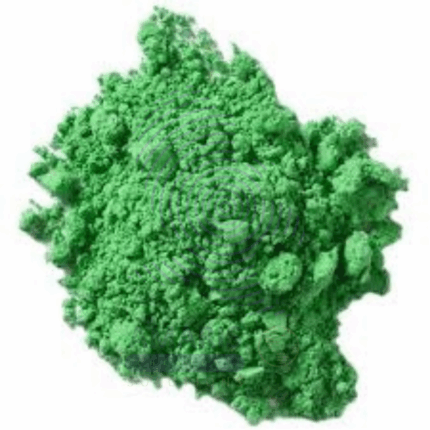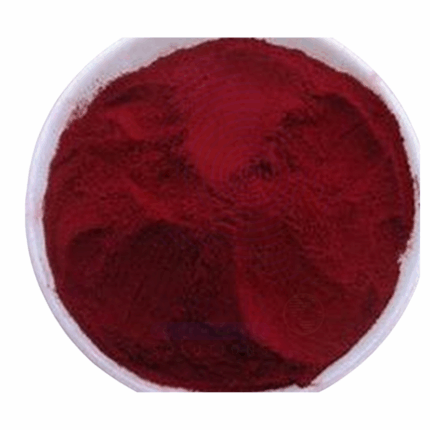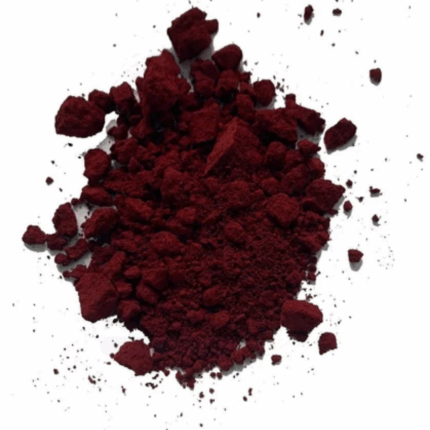Purple Pigment
Whatsapp Order
Purple Pigment is a colorant formulation containing 10% concentrated purple pigment dispersed in a carrier matrix. It is used to impart purple coloration in a wide range of applications, offering excellent color stability, UV resistance, and compatibility with various substrates. This pigment preparation is widely utilized in plastics, coatings, inks, textiles, cosmetics, and construction materials, where consistent hue and dispersion are essential.
Description
Table of Contents
Toggle
Purple Pigment
Primary Uses
- Paints and Coatings
- Provides vibrant purple color in decorative and industrial paints.
- Used in wood stains, automotive coatings, metal primers, and marine paints.
- Enhances UV and chemical resistance of surface coatings.
- Plastics and Polymers
- Used in coloring plastic resins such as PVC, polyethylene, polypropylene, and ABS.
- Applied in injection molding, blow molding, and extrusion processes.
- Ensures uniform dispersion and heat stability in plastic manufacturing.
- Printing Inks
- Used in water-based, solvent-based, and UV-curable inks for flexographic, screen, and offset printing.
- Provides rich color for packaging, labels, and commercial print media.
- Textiles
- Used in pigment printing for fabric coloration on cotton, polyester, and blends.
- Ensures wash-fastness and light-fastness in textile printing and dyeing.
- Construction Materials
- Incorporated in cement, plasters, tiles, and architectural coatings for durable coloration.
- Used in paver blocks, concrete bricks, and grout for aesthetic enhancement.
- Cosmetics and Personal Care
- Used in colored cosmetic products such as eyeshadows, nail polishes, and lipsticks.
- Provides a stable, non-reactive coloring option for formulations.
Secondary Uses
- Art Supplies
- Utilized in artist paints, inks, and pastels for bold color expression.
- Used in markers and colored pencils for educational and artistic use.
- Rubber Products
- Applied in the coloration of rubber seals, grips, and footwear soles.
- Paper Industry
- Used in colored paper, envelopes, and decorative cartons.
- Ceramics and Glass
- Incorporated in glazes and decorative finishes for ceramic and glassware.
- Leather Finishing
- Used to dye leather for fashion accessories and upholstery applications.
KEY PRODUCT FEATURES
1. Basic Identification Attributes
- Chemical Name (IUPAC): Varies based on pigment (typically a complex organic or inorganic compound)
- Common/Trade Name: Purple Pigment 10%
- CAS Number: Varies depending on pigment type (e.g., Pigment Violet 23: 6358-30-1)
- HS Code: 3204.17.00 (Synthetic organic coloring matter)
- Synonyms: Violet pigment dispersion; Purple colorant concentrate
2. Physical & Chemical Properties
- Physical State: Viscous liquid or paste (or powder if supplied dry)
- Color & Odor: Deep purple color; mild to neutral odor
- Concentration: 10% pigment by weight in a dispersing medium
- Solubility: Insoluble in water; dispersible in specific solvents or carriers
- Density: Varies depending on formulation; typically ~1.2–1.6 g/cm³
3. Safety & Hazard Attributes
- GHS Classification: May cause eye/skin irritation depending on carrier and pigment type
- Toxicity: Low toxicity; varies by pigment composition
- Exposure Limits: Follow safety data sheet for specific product
4. Storage & Handling Attributes
- Storage Conditions: Store in a cool, dry place in tightly sealed containers
- Container Type: Plastic or metal drums, pails, or jars
- Shelf Life: Typically 12–24 months depending on formulation and storage
- Handling Precautions: Use gloves and goggles; avoid inhalation of dust (if dry) or skin contact
5. Regulatory & Compliance Attributes
- Complies with relevant pigment safety standards for intended applications
- May meet FDA, EU, and REACH regulations for use in food contact or cosmetic-grade formulations (if specified)
- Manufactured in ISO or GMP-certified facilities depending on use case
6. Environmental & Health Impact
- Biodegradability: Generally non-biodegradable; inert in most environments
- Ecotoxicity: Varies; minimal impact when used as directed
- Bioaccumulation: Not significant for most inorganic or stable organic pigments
SAFETY HANDLING PRECAUTIONS
Safety Handling Precautions
- PPE Required: Gloves, goggles, dust mask or respirator (if powder form)
- Handling Guidelines: Avoid direct contact and dust inhalation; use in ventilated areas
- Storage Measures: Keep containers tightly closed and stored in a dry environment
First Aid Measures
- Inhalation: Move to fresh air; seek medical help if symptoms persist
- Skin Contact: Wash with soap and water; seek medical advice if irritation develops
- Eye Contact: Rinse with water for 15 minutes; consult a physician if irritation continues
- Ingestion: Rinse mouth; do not induce vomiting; seek medical attention
Firefighting Measures
- Fire Hazards: Non-flammable pigment; carrier medium may be combustible
- Extinguishing Media: Use foam, dry chemical, water spray, or CO₂
- Special Precautions: Use self-contained breathing apparatus for enclosed fires
- Hazardous Combustion Products: May release carbon oxides or fumes depending on binder or carrier
Related products
Acid Black 2 Powder
Acid Black 2 Powder is a synthetic anionic disazo dye belonging to the acid dye class, specifically formulated for intense black coloration with excellent light and wash fastness properties. This high-purity powder (100% active) exhibits superior solubility in aqueous solutions, making it particularly suitable for dyeing protein-based fibers like wool, silk, and nylon under acidic conditions. As a chromium-complex dye, it delivers enhanced color depth and improved fastness characteristics compared to non-metalized acid dyes. The powder form ensures precise dosing, consistent batch-to-batch reproducibility, and long-term stability when stored properly. Its molecular structure features sulfonic acid groups that facilitate strong ionic bonding with amino groups in fibers, resulting in vibrant, penetration-rich coloration with minimal bleeding.
Acid Black 210
Acid Black 210 is a high-performance, metal-complex acid dye specifically engineered for deep black shades with exceptional wet fastness properties. This chromium-based dye belongs to the 1:2 metal complex dye class, offering superior molecular stability and fiber affinity. The powder formulation delivers consistent, vibrant coloration for synthetic polyamide fibers and protein-based textiles, with optimized characteristics for industrial dyeing processes. Its molecular structure features multiple sulfonic acid groups that ensure excellent water solubility and penetration, while the metal complex formation provides enhanced light and wash fastness compared to non-metalized acid dyes.
Blue Dye
Blue Dye is a water-soluble synthetic dye solution with 6% active dye content, providing a vivid blue coloration for various industrial applications. It is formulated for easy dispersion in aqueous systems and offers consistent color strength and stability. This dye is widely used in textile dyeing, paper coloring, cosmetics, and cleaning products.
Bright Yellow Dye
Bright Yellow Dye is a high-strength, water-soluble synthetic dye solution designed for vibrant red coloration across various industrial and consumer products. With 20% active dye content, it offers excellent color intensity, easy dispersibility, and compatibility with a wide range of aqueous systems. This versatile dye is widely used in textiles, paper, personal care products, and household cleaning formulations.
Brilliant Blue Dye
Brilliant Blue Dye is a synthetic acid dye known for its bright, vibrant blue coloration and excellent affinity for protein fibers such as wool, silk, and nylon. It is highly soluble in water under acidic conditions, delivering uniform and vivid dyeing results. This dye is widely used in textile dyeing, leather processing, and specialty applications requiring stable and durable blue shades. Brilliant Blue Dye exhibits excellent fastness to washing, light, and perspiration, making it ideal for high-quality fabric and leather products.
Green Pigment
Green Pigment is a concentrated dispersion of green pigment particles in a suitable carrier, designed for use in a variety of industrial and commercial applications. Known for its vivid green color and excellent stability, this pigment offers good resistance to heat, light, and chemicals. It is widely employed in plastics, coatings, inks, and other manufacturing processes where vibrant, durable green coloration is required.
Strawberry Red Pigment
Strawberry red pigment is a concentrated synthetic pigment dispersion providing a bright and vivid strawberry-red coloration. Known for its excellent lightfastness, chemical resistance, and thermal stability, it is widely used in paints, coatings, plastics, inks, and specialty industrial applications. The pigment ensures consistent color strength and durability across multiple manufacturing processes and substrates.
Waxol Solvent Red
Waxol Solvent Red is a synthetic dye primarily used for coloring hydrocarbon-based products. It is a solvent-soluble red dye known for its excellent color strength, stability, and compatibility with various waxes, oils, plastics, and fuels. This dye is widely employed in industries requiring vibrant red coloration of non-polar materials, providing consistent performance under different processing conditions.


 Preservatives(food)
Preservatives(food) Flavor Enhancers
Flavor Enhancers Acidulants
Acidulants Sweeteners
Sweeteners Antioxidants
Antioxidants Colorants(food)
Colorants(food) Nutraceutical Ingredients (food)
Nutraceutical Ingredients (food) Nutrient Supplements
Nutrient Supplements Emulsifiers
Emulsifiers
 Collectors
Collectors Dust Suppressants
Dust Suppressants Explosives and Blasting Agents
Explosives and Blasting Agents Flocculants and Coagulants
Flocculants and Coagulants Frothers
Frothers Leaching Agents
Leaching Agents pH Modifiers
pH Modifiers Precious Metal Extraction Agents
Precious Metal Extraction Agents
 Antioxidants(plastic)
Antioxidants(plastic) Colorants (Pigments, Dyes)
Colorants (Pigments, Dyes) Fillers and Reinforcements
Fillers and Reinforcements Flame Retardants
Flame Retardants Monomers
Monomers Plasticizers
Plasticizers Polymerization Initiators
Polymerization Initiators Stabilizers (UV, Heat)
Stabilizers (UV, Heat)
 Antifoaming Agents
Antifoaming Agents Chelating Agents
Chelating Agents Coagulants and Flocculants
Coagulants and Flocculants Corrosion Inhibitors
Corrosion Inhibitors Disinfectants and Biocides
Disinfectants and Biocides Oxidizing Agents
Oxidizing Agents pH Adjusters
pH Adjusters Scale Inhibitors( water)
Scale Inhibitors( water)
 Antioxidants(cosmetic)
Antioxidants(cosmetic) Emollients
Emollients Fragrances and Essential Oils
Fragrances and Essential Oils Humectants
Humectants Preservatives
Preservatives Surfactants(cosmetic)
Surfactants(cosmetic) Thickeners
Thickeners UV Filters
UV Filters
 Fertilizers
Fertilizers Soil Conditioners
Soil Conditioners Plant Growth Regulators
Plant Growth Regulators Animal Feed Additives
Animal Feed Additives Biostimulants
Biostimulants Pesticides (Herbicides, Insecticides, Fungicides)
Pesticides (Herbicides, Insecticides, Fungicides)
 Active Pharmaceutical Ingredients (APIs)
Active Pharmaceutical Ingredients (APIs) Excipients
Excipients Solvents(pharmaceutical)
Solvents(pharmaceutical) Antibiotics
Antibiotics Antiseptics and Disinfectants
Antiseptics and Disinfectants Vaccine Adjuvants
Vaccine Adjuvants Nutraceutical Ingredients (pharmaceutical)
Nutraceutical Ingredients (pharmaceutical) Analgesics & Antipyretics
Analgesics & Antipyretics
 Analytical Reagents
Analytical Reagents Solvents(lab)
Solvents(lab) Chromatography Chemicals
Chromatography Chemicals Spectroscopy Reagents
Spectroscopy Reagents microbiology-and-cell-culture-reagents
microbiology-and-cell-culture-reagents Molecular Biology Reagents
Molecular Biology Reagents Biochemical Reagents
Biochemical Reagents Inorganic and Organic Standards
Inorganic and Organic Standards Laboratory Safety Chemicals
Laboratory Safety Chemicals Specialty Laboratory Chemicals(Special Laboratory Equipment)
Specialty Laboratory Chemicals(Special Laboratory Equipment)
 Demulsifiers
Demulsifiers Hydraulic Fracturing Fluids
Hydraulic Fracturing Fluids Scale Inhibitors(oil)
Scale Inhibitors(oil) Surfactants(oil)
Surfactants(oil) Drilling Fluids
Drilling Fluids
 Dyes and Pigments
Dyes and Pigments Bleaching Agents
Bleaching Agents Softening Agents
Softening Agents Finishing Agents
Finishing Agents Antistatic Agents
Antistatic Agents
 Admixtures
Admixtures Waterproofing Agents
Waterproofing Agents Sealants and Adhesives
Sealants and Adhesives Curing Compounds
Curing Compounds Concrete Repair Chemicals
Concrete Repair Chemicals Anti-Corrosion Coatings
Anti-Corrosion Coatings
 Surfactants(cleaning)
Surfactants(cleaning) Builders
Builders Enzymes
Enzymes Solvents (Cleaning)
Solvents (Cleaning) Fragrances
Fragrances
 Electronic Chemicals
Electronic Chemicals Catalysts
Catalysts Lubricants
Lubricants Photographic Chemicals
Photographic Chemicals Refrigerants
Refrigerants Automotive chemicals
Automotive chemicals Pyrotechnic Chemicals
Pyrotechnic Chemicals
 Biodegradable Surfactants
Biodegradable Surfactants Bio-based Solvents
Bio-based Solvents Renewable Polymers
Renewable Polymers Carbon Capture Chemicals
Carbon Capture Chemicals Wastewater Treatment Chemicals
Wastewater Treatment Chemicals
 Pigments
Pigments Solvents(paint)
Solvents(paint) Specialty Coatings
Specialty Coatings Binders/Resins
Binders/Resins Additives
Additives Driers
Driers Anti-Corrosion Agents
Anti-Corrosion Agents Functional Coatings
Functional Coatings Application-Specific Coatings
Application-Specific Coatings
 Fresh Herbs
Fresh Herbs Ground Spices
Ground Spices Whole Spices
Whole Spices Spice Blends
Spice Blends Dried Herbs
Dried Herbs
 Leavening Agents
Leavening Agents Dough Conditioners
Dough Conditioners Flour Treatments
Flour Treatments Fat Replacers
Fat Replacers Decoratives
Decoratives Preservatives(baking)
Preservatives(baking)
 Plasticizers & Softeners
Plasticizers & Softeners Reinforcing Agents
Reinforcing Agents Adhesion Promoters
Adhesion Promoters Vulcanizing Agents
Vulcanizing Agents Antidegradants
Antidegradants Blowing Agents
Blowing Agents Fillers & Extenders
Fillers & Extenders Accelerators & Retarders
Accelerators & Retarders